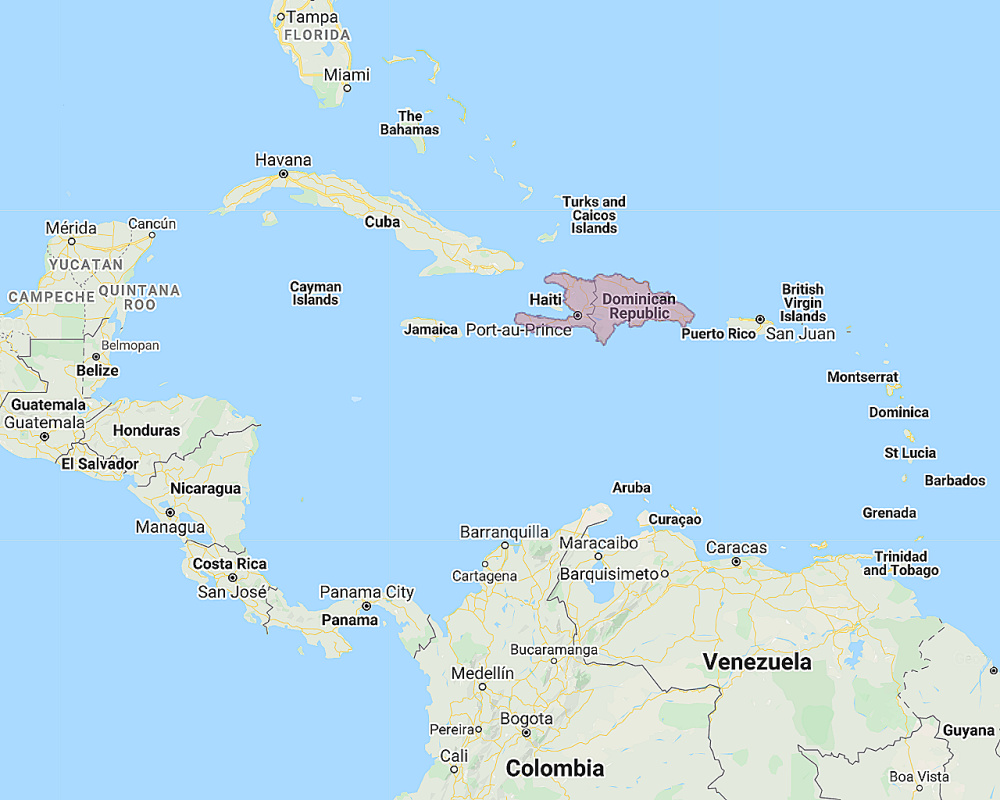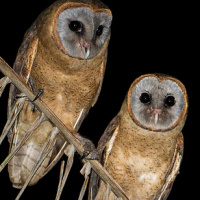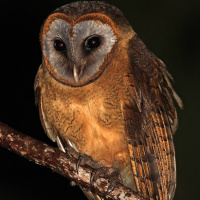Introduction
The Ashy-faced Owl is a medium-sized barn owl with no ear-tufts. It is also known as the Hispaniolan Barn Owl.
Photo Gallery (2 pictures)
Sound Gallery
Information
Description: The facial disc is ashy-grey with a prominent orange-brown rim. There is a faint brownish wash at the lower edge of the eyes, which are
blackish-brown. The bill is yellowish-horn.
Upperparts are yellowish-brown with blackish vermiculations. The edge of the wings near the wrist is orange-brown, and the wings are yellowish-brown,
finely mottled dark. The primaries, secondaries and tail have a few dark bars.
Underparts are yellowish-brown with dark arrow-shaped spots. The legs are relatively long, and feathered yellowish-brown. The toes are bare,
greyish-brown, and sparsely bristled. The claws are blackish-brown.
Size: Length 33-35cm. Wing length 240-280mm. Tail length 127-160mm. Weight 260-535g. Females are larger and heavier than males.
Habits: The habits of the Ashy-faced owl are little known, but likely similar to that of other barn owls.
Voice: A rasping wheeze of 2-3 seconds duration, different from the American Barn Owl. Also utters rapid clicking trills.
Hunting & Food: Feeds on small mammals such as mice and rats. Also takes small birds, frogs, reptiles and insects.
Breeding: The breeding habits of this owl are not known, but likely similar to that of other barn owls.
Habitat: Open country with scattered trees and bushes, often near human settlements. Also found in open forest. Ranges from lowlands to above 2000m elevation.
Distribution: This owl is endemic to the island of Hispaniola and some smaller surrounding islands in the Caribbean.

Range of the Ashy-faced Owl Tyto glaucops
Status: Listed as 'Least Concern' by Birdlife International.
Original Description: Kaup, Johannes Jacob. 1852. Contributions to Ornithology 1848-1852 [Jardine], 6, p. 118.




